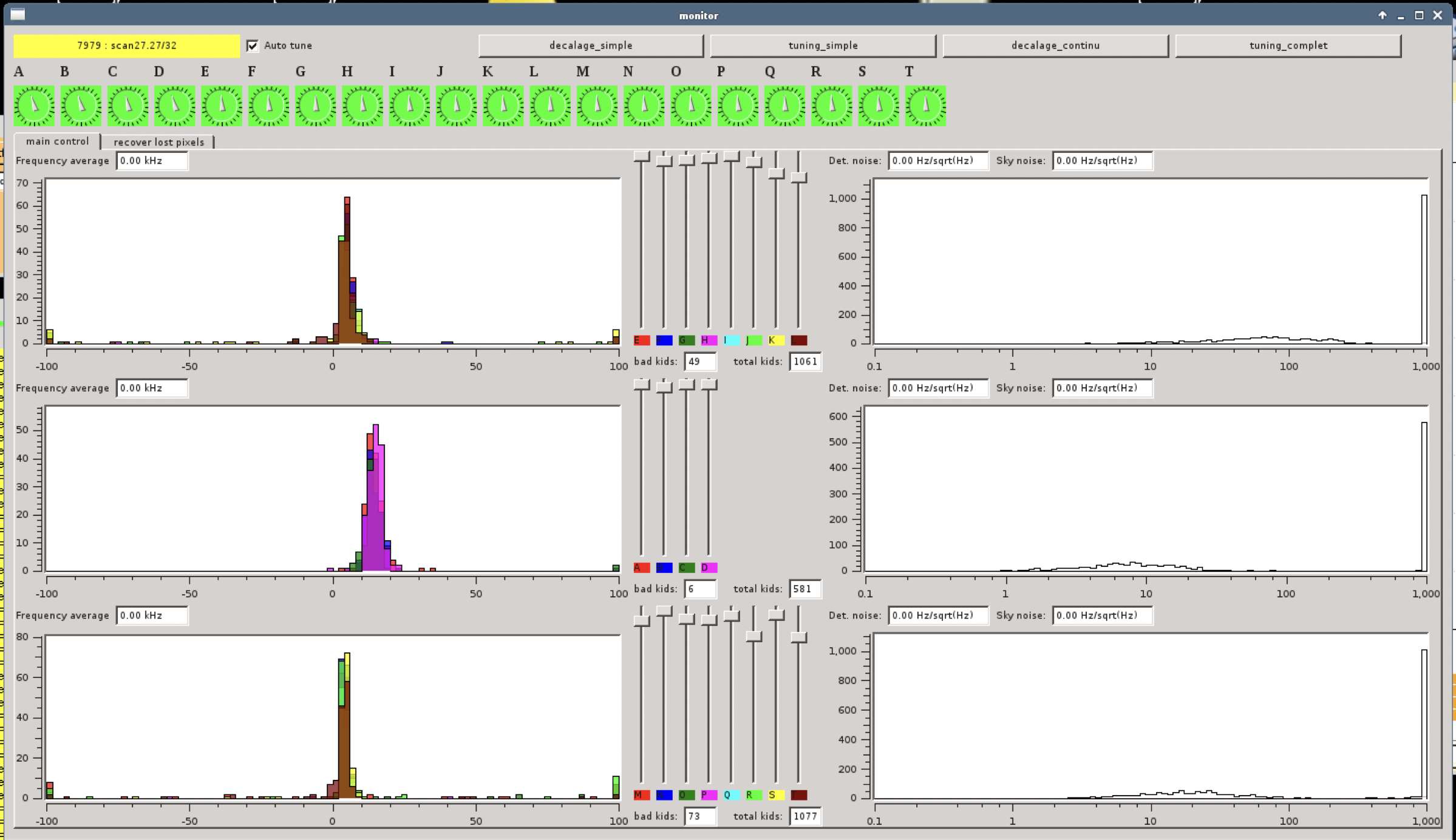Daily Reports
Contents
Nov 15th, Tuesday
16:36-21:00; Stergios: No NIKA2 neither EMIR observations were conducted during due to high tau values (see following plot depicting the corresponding tau values for this time window). We performed a quick system check that started at 16:36 (after maintenance) checking only the tuning since we could not perform a pointing or focus due to the weather conditions. For training purposes of the current observers we initiated the data acquisition for NIKA2.
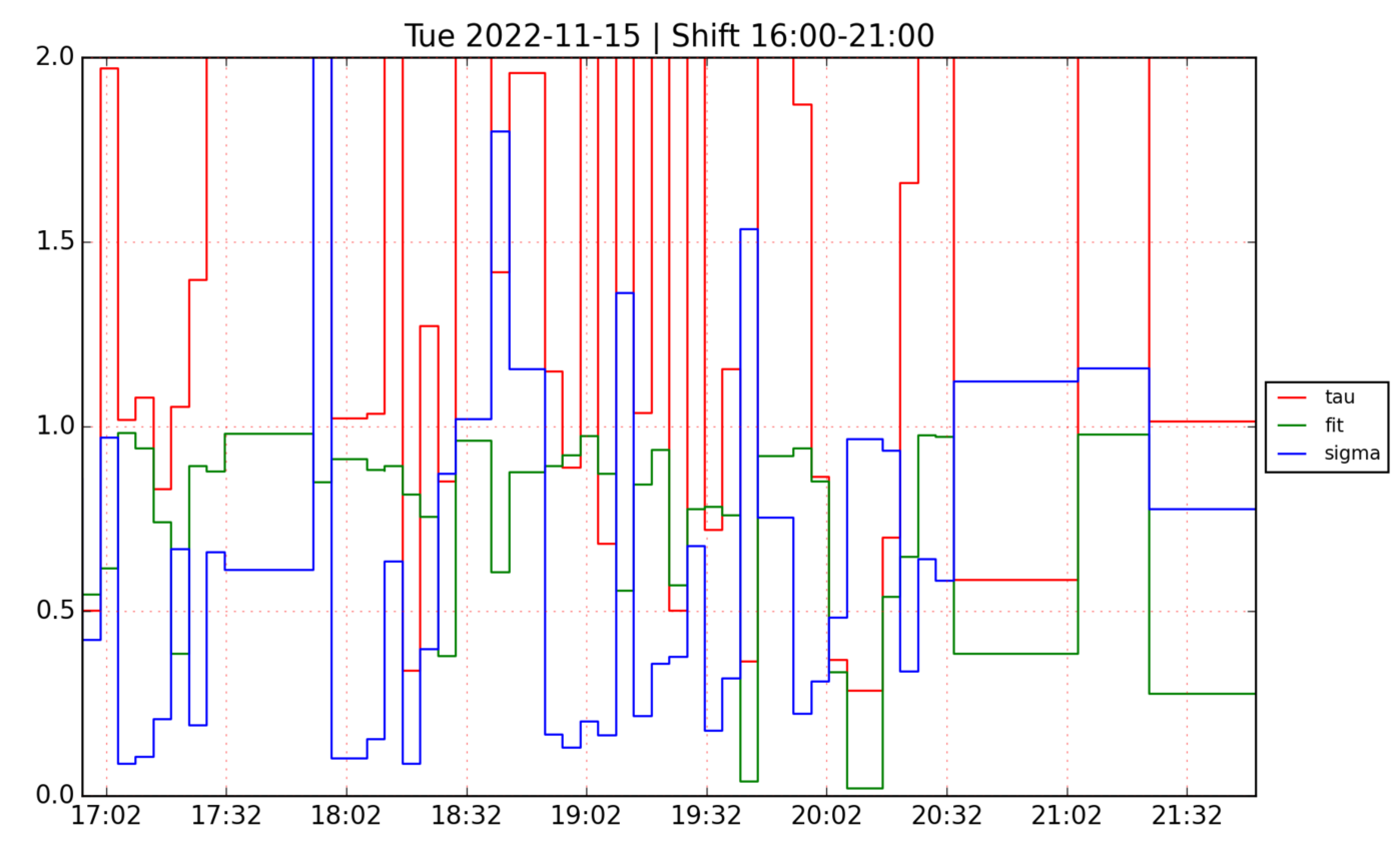
21:00-03:00; Lara: High tau values. No observations.
Nov 16th, Wednesday
03:00-09:00; Stergios: High tau values and rain during the whole shift with increase of the wind velocity. No observations.
09:00-15:00; Rodrigo: Very unstable tau measurements (0.2 < tau < 8.8). Rain and light snow for most part of the shift. No observations.
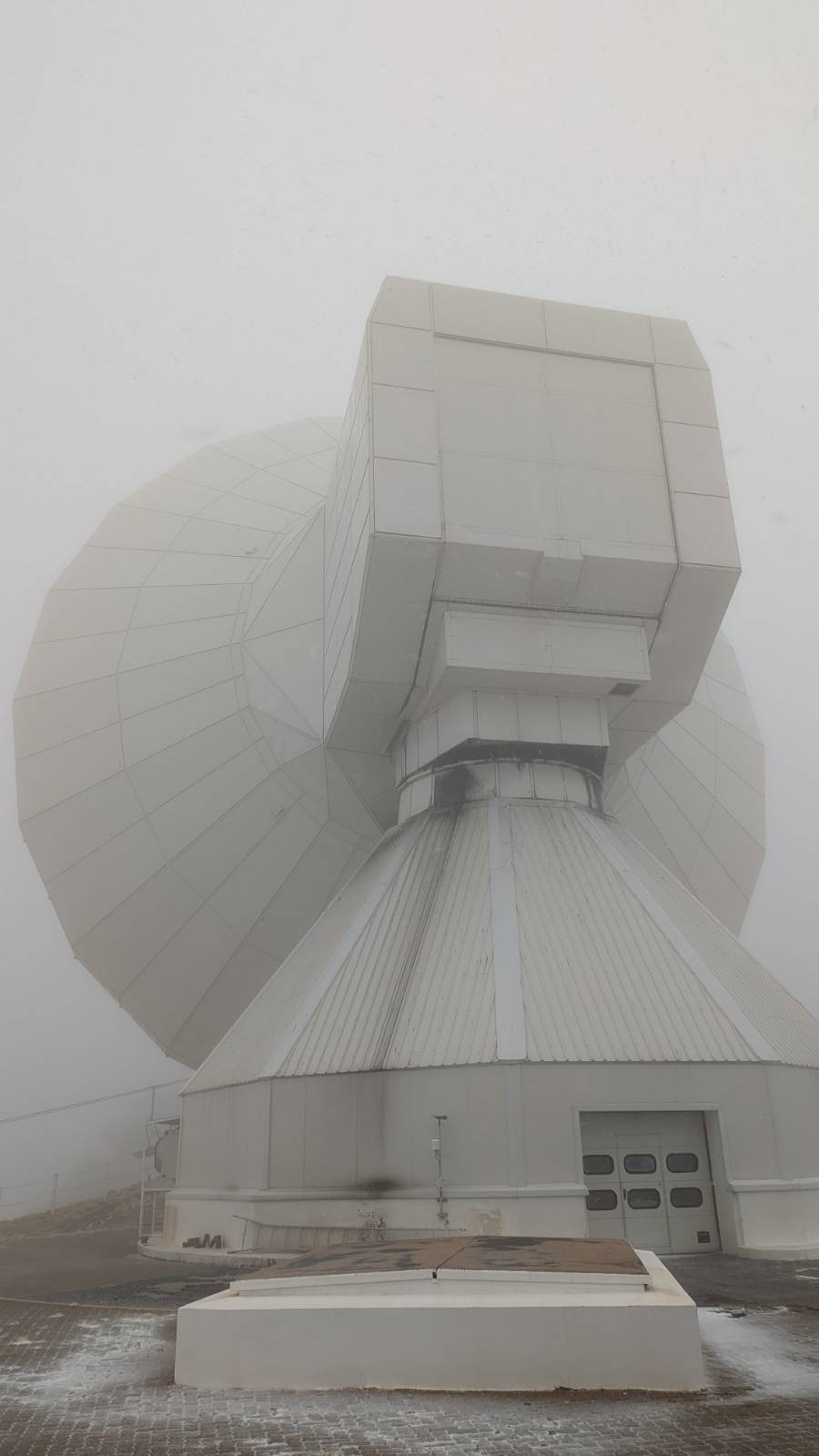
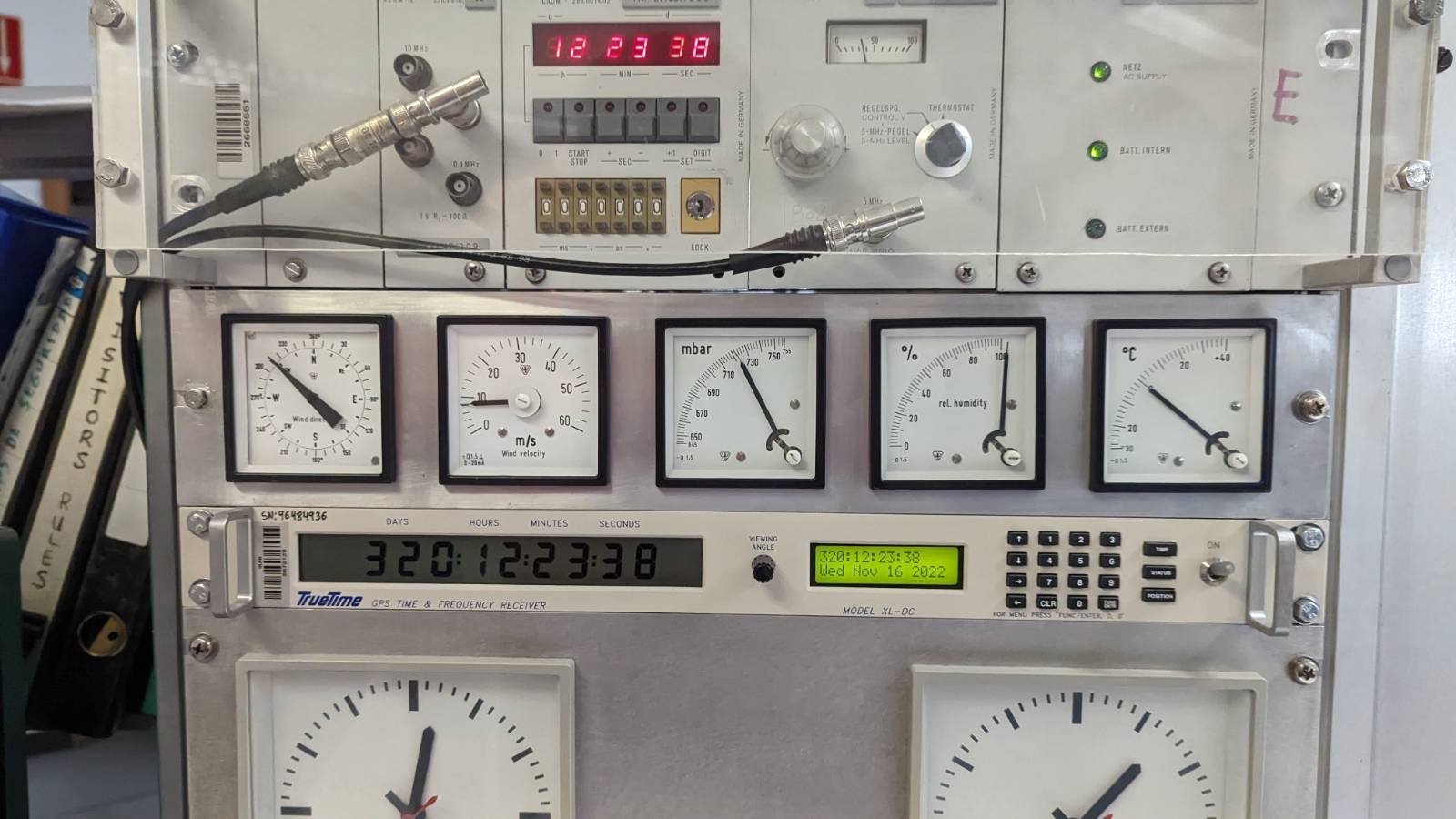
15:00-21:00; Israel: No observations carried at the telescope due to high values of tau (~5-8) and periodic rains. I attach a picture of the site during the late afternoon
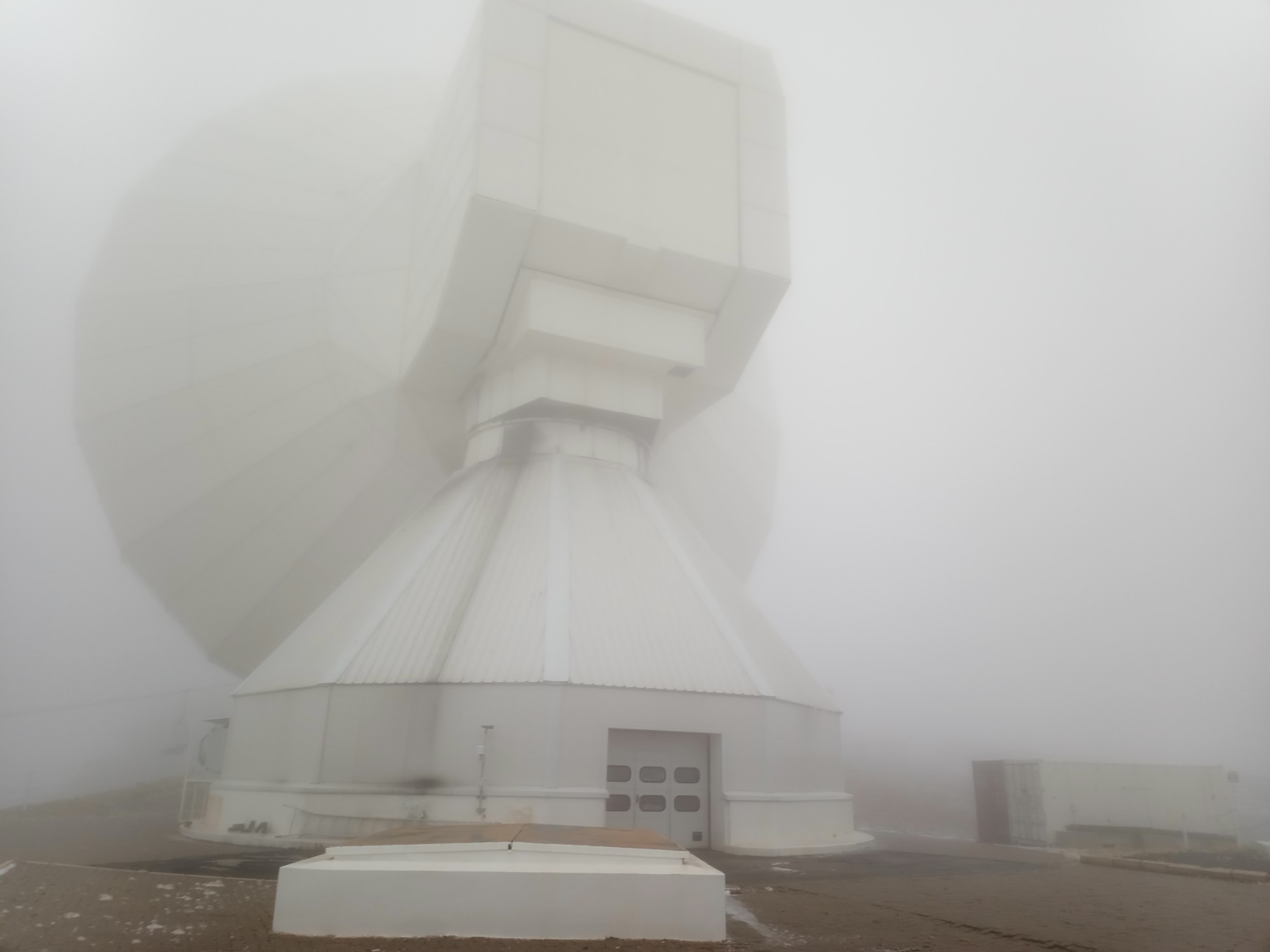
21:00-03:00; Lara: It was not possible to observe with either NIKA2 (tau>0.4) or EMIR (high tau + highly unstable weather conditions).
Nov 17th, Thursday
03:00-09:00; Stergios: Started observations with EMIR at 5:32 under the project 079-22. We tried a couple of pointings which showed high variability in the atmosphere. We stopped around 6:00 due to rain. We started again the observations with EMIR at 7:46, trying pointing under the same project and stopped again at 8:09 due to high values of tau and the fact that we could not obtain a stable pointing. We repeated another data acquisition with NIKA for training purposes. No observations on science targets.
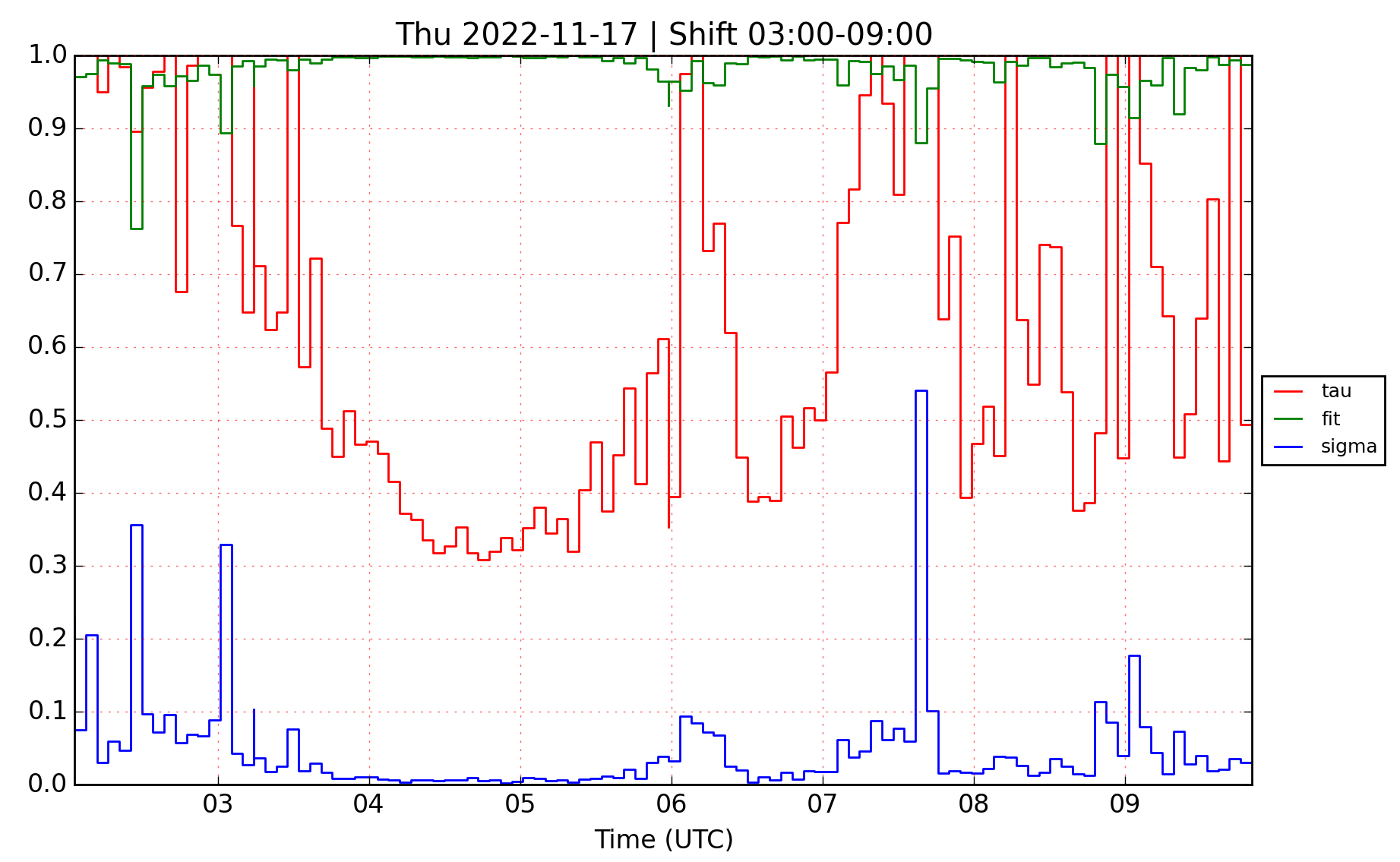
09:00-15:00; Rodrigo: Fog and light rain. High and unstable tau values. Telescope was parked. No observations.
15:00-21:00; Israel: No observations performed due to the foggy weather -high and unstable values of tau (~1-3)-. The whole shift was accompanied by periodic rains.
21:00-03:00; Lara: Due to highly unstable weather conditions and large tau values, it was not possible to observe.
Nov 18th, Friday
03:00-09:00; Stergios: High tau values, rain, fog, no observations.
09:00-15:00; Rodrigo: Heavy snow and high tau values. No observation.
15:00-21:00; Israel: High tau values, snowing, no observations.
21:00-03:00; Lara: Starting pointing test with EMIR at 22:30 pointing to Mars since tau values dropped to ~0.4 with more or less stable weather. We checked some pointings and focus, tau decreasing to 0.1 but there was a bit of instability still. Good pointing after focus, more stable weather, we decided to switch to NIKA2 at 00:30 (Local time). We performed three data acquisitions with the following number of bad pixels (i.e., Ar1, Ar2, Ar3, respectively): 41, 7, 63 | 38, 6, 63 | 43, 7, 61. Very stable atmosphere with tau values around 0.2. We performed a pointing and focus with Mars. At 1:51 am we moved to project 093-22 (higher priority projects not visible at the moment, or with not so great elevation for being observed). Pointing at 0851+202 (focus was done with Mars) go to the source PSZ2G186 (no need for another focus since FWHM 17.2x19). We performed a skydip at 2:46 [20221119s21]. We started a flux calibration at ALFORI and moved after back to a pointing at 0851+202.
Nov 19th, Saturday
03:00-09:00; Stergios: We continue with the observations of PSZ2G186 (project 093-22) with excellent weather conditions (tau~0.2, quite stable) until 04:04. We decided to move to COSMOS (project 192-16) performing a pointing/focus on 0851+202 again. The histograms from the data acquisition seem to deviate a bit far from the zero values with the histograms being a bit broad, although this drift should be attributed due to the long COSMOS scan (~52min):
We performed another skydip and at 06:36 [20221119s43] we switched to project 160-16, performing firstly a pointing/focus and then going to target NGC4254. High variability of ~10Jy/b at 2mm, we repeat the data acquisition and repeat the scans to test the variability (the Sun is rising which might have caused the effect). Tau is increasing so we move to the more relaxed project 089-22. We took good pointing/focus and we tried one scan on the source J0842-0157 however the tau is increasing, therefore we wait and possibly change to EMIR.
09:00-15:00; Rodrigo: We waited until tau values become stable and switched to preparations for project 095-22. NIKA2 data acquisition is performed before starting. 66, 8, 93 bad pixels in each array, but histograms do not stay close to zero. Sky covered and tau values keep unstable (2 < tau < 4) and increasing. Switched to EMIR (~10:00 LT). Started with pointing and calibrations. Atmospheric conditions get stable around tau=0.3 and switch back to NIKA2 (~12:00 LT). Data acquisition performed and 59, 7, 87 bad pixels found in each array. Observations for project 079-22. Pointing/focus and observations from target AR2747 (two cycles of eleven observations with pointing in between).
15:00-21:00; Israel: Observation shift started at 14h (UTC). Weather conditions were clear with low wind and tau~0.3 and suitable for NIKA-2 observations. KIDS were calibrated at 15h (UTC) with 57, 7, 88 bad KIDS.Sky conditions at 5 Jy/b but visible targets for project 199-16 were missing from Xephem so project 089-22 was targeted. Issue with 199-16 solved, with the help of Angel Bongiovani, at ~16h (UTC) but sky variability now at about 5-7 Jy/beam. Observations with NIKA-2 were continued for projects targeting point sources, namely: 089-22, and 032-22. Values for tau steadily increased along the shift from 0.3 to 0.5 at sunset. At 18h15 (UTC) we stopped NIKA observations and waited for about 40 minutes to see whether tau will settle around 0.4 or lower to continue observations with NIKA2. At 19h00 (UTC) we switched to EMIR due to the increased worsening of weather conditions (tau>0.5). Observations stopped at 19h30 (UTC) as weather conditions prevented to get good pointings and focus even with EMIR. During the shift we carried-on 2 calibration with NIKA (calib_1scan in Neptune and NGC) but no skydips nor beammaps.
21:00-03:00; Lara: Good weather conditions at 9 pm for observing with EMIR (tau ~ 0.5 - 0.6; pwv <10; atmosphere stability checked through pointing and focus before observing). Observations were taken following the EMIR schedule, based on the visibility and the elevation of the targets. First project observed 056-22, source G111.54 (9:10 pm - 10:20 pm LT). Second project observed 009-22, source TMC1-CP (good weather conditions as before while doing pointing and focus; 10:35 pm LT). Some checks were done because the antenna was oscillating (11 pm LT). Observation started at 11:20 pm LT. I note some instabilities in tau (tau meter) starting from 11:50 pm LT (tau was jumping up to values >1, then back to 0.6-0.7 and back again to >1, the sky above the antenna was dark, no star visible by eye). Observation finished at 11:57 pm LT. Set to project test and waited for weather conditions to improve. First improvement at 1:50 am LT (tau ~ 0.5, pwv ~ 5). Good pointing and focus (2:05 am LT). Switching back to project 009-22. Observation started at 02:14 am LT and finished at 2:52 am LT. Weather conditions started to deteriorate again around 2:40 am LT.
Nov 20th, Sunday
03:00-09:00; Stergios: We continued observations of the project 009-22 (the source SU Aur is above 80 degrees to move to project 062-22). The data of this project were not stored correctly to the project’s directory. AS was contacted. We moved to project 062-22, however the weather improved so at 03:46 (UTC) we switched to NIKA. Data acquisition (repeated three times) have shown 61/8/85 bad KIDS for the Ar1, Ar2 and Ar3, respectively. Pointing/focus/calib1scan at Mars, moving to 1055+018 for pointing and then to project 089-22 (lower priority but higher tau+instabilities for the rest of the visible targets) with the source 1030+0135. The weather improved further (tau~0.3 - stable) so we stopped the observations of 089-22 (~30min total observed) and moved to the project 192-16 (COSMOS). High peak-to-peak values of ~70Jy/b and rms >50mJy/b at 2mm (probably unusable maps), changing back to 089-22. [CK: Most of the scan time, the p2p variation is much better.]
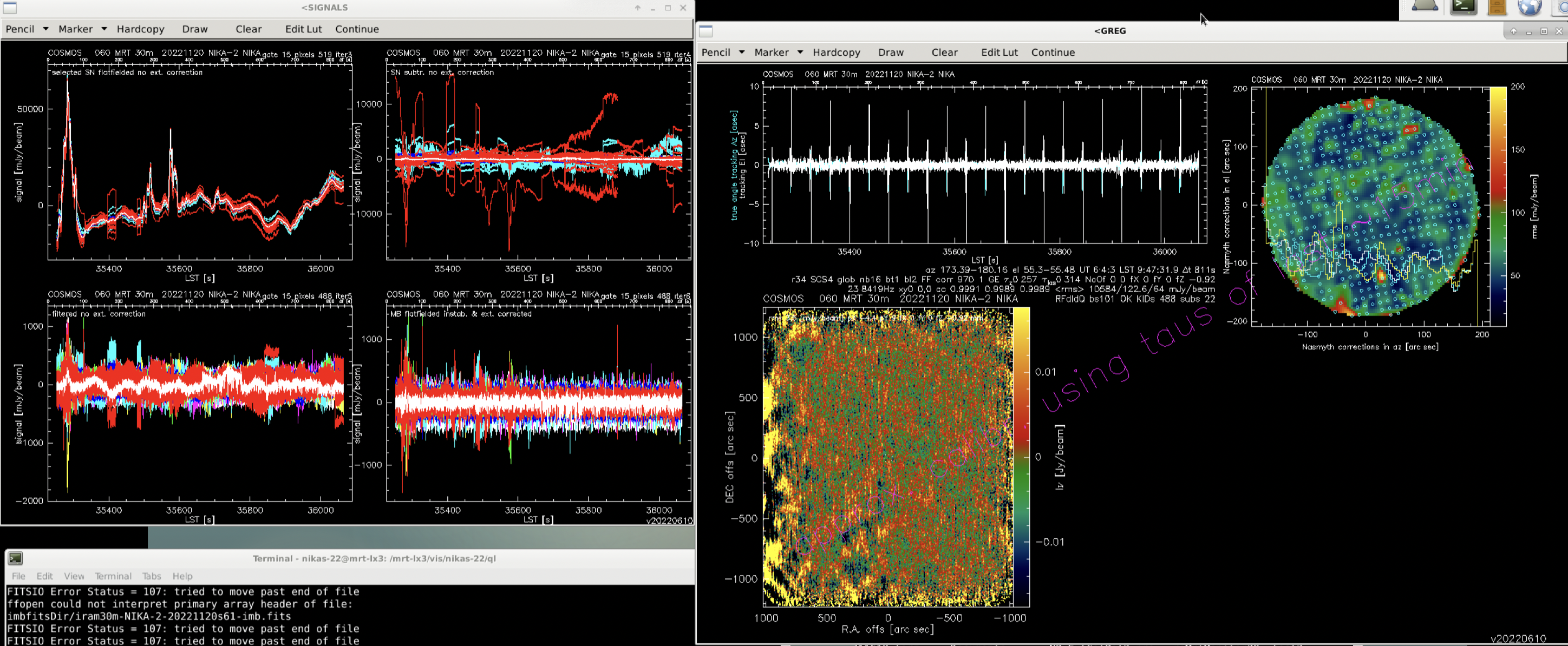
Stability improved so we move to COSMOS after pointing/focus however we had to stopped at 08:00 UTC due to high wind. The anemometer was showing low wind velocity, however the antenna wind alarm and 'feeling' of the wind outside the main building were indicating wind close to the limit. GL checked the anemometer which might need some adjustments. Here is a video:
09:00-15:00; Rodrigo: First minutes of shift, observations were paused because of very strong winds. Conditions improved and performed a data acquisition for NIKA with 66, 9, 90 bad KIDs. Switched to project 089-22 with tau ~0.35-0.4. Pointing with source 1055+018. Variability was 4 Jy/beam with rms 54 mJy/beam. Observed J1030+0135. A new pointing was performed with source 1226+023. FWHM 17.04*18.96 @ 2mm. On the same source, a focus was performed, followed with pointing (FWHM 17.94*19.13 @ 2mm). A calib_1scan was executed on NGC7538 and the variability was ~10 Jy/beam (presumably, this was due to a very low elevation of the calibration source). Following this, a new pointing was performed with source 1928+738 obtaining a variability ~3Jy/beam, rms ~52.9 mJy/beam, and FWHM 17.28*19.14. Moved to source J1327+4846 (tau~0.3). Performed skydip and switched to project 032-22. Pointing to 1928+738 (FWHM 18.15*19.33), and a second Pointing to 1642+690 (FWHM 17.1*17.94). Observed J1509 and J1510. Do calib_1scan with NGC7027. High values of FWHM (~10*21 mJy/beam) and variability found (~10 Jy/beam). Finalised shift with new calibration of data acquisition, obtaining 56, 6, and 73 bad KIDs.
15:00-21:00; Stergios: Tau improves even more (tau~0.18) so we move to project 160-16 that requires tau<0.25 and <6Jy/b variability. However, after a few scans we see large peak-to-peak values (~10-20Jy):
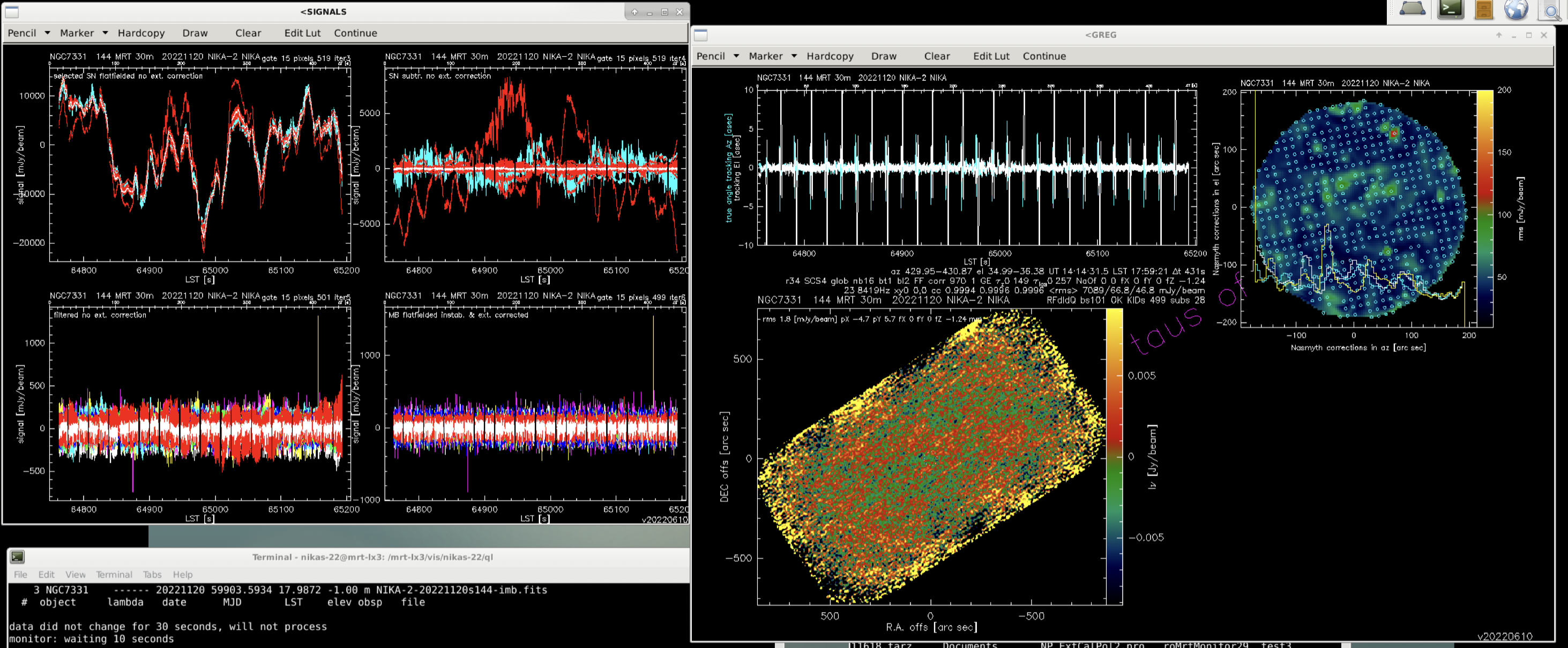
High instabilities continued in all scans, thus we move to project 032-22.
21:00-03:00; Lara:
Nov 21st, Monday
03:00-09:00; Israel:
15:00-21:00; Rodrigo:
21:00-03:00; Lara:

